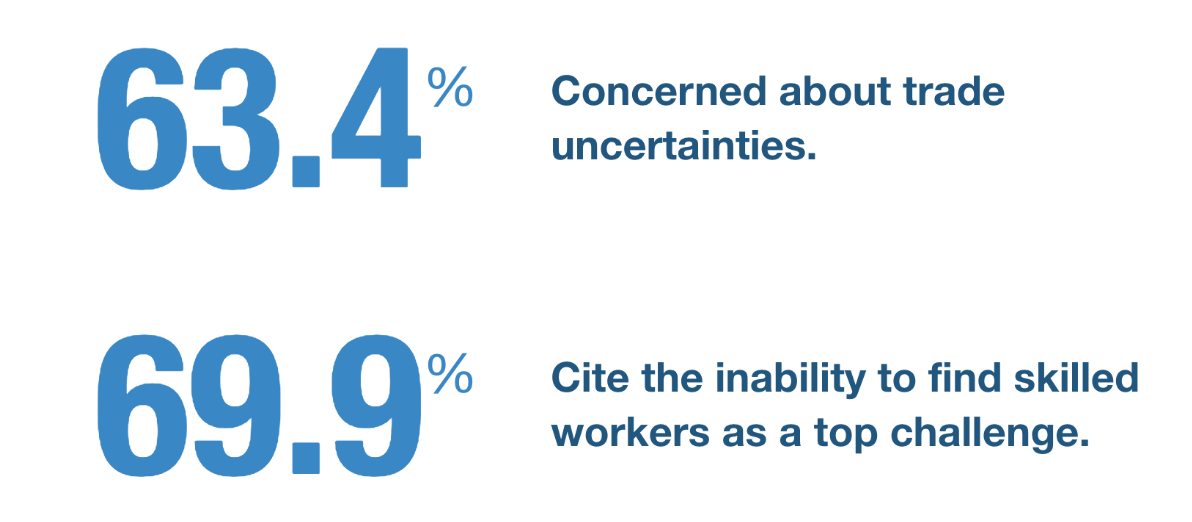You’ve probably heard of the ‘connected workforce’, but what does this mean in real life?
According to DigitalHRTech.com, “With the arrival of SMAC – an acronym for Social, Mobile, Analytics, and Cloud – the road to a truly connected workforce has been opened.” The connected workforce is in part driven by the ‘consumerization of IT’, that is, employees in companies increasingly expect their interactions with their business technology to mirror their experiences with their personal technology. That means that they expect to have the information that they need, at the time that they need it, through any digital device they have access to, including mobile devices.
What’s changed with the ‘connected workforce’ in manufacturing is that now, with IIoT (Industrial Internet of Things) technologies, information can now flow directly from connected machines to the connected workforce.
This is the game changer that’s going to finally move the profit margin needle for food manufacturers.
How do you get started?
A successful business begins with the people that operate it. It’s becoming increasingly difficult to recruit and retain workers in food manufacturing. Food manufacturers need to find ways to produce more high quality products with fewer workers. The missing ingredient has been timely access to information. By connecting food production machinery through IIoT technologies and presenting easily understandable, intuitive dashboards to workers and management, it’s possible to achieve real impacts such as a 23% reduction in labor costs per unit.
A workforce that has access to accurate, timely production KPIs in an environment where issues are heard and resolved, rather than ignored and pushed under a rug can do amazing things. Implementing a connected workforce requires more than simply installing new technologies. Successful implementations of connected worker infrastructure usually do so while implementing empowering practices such as lean manufacturing, Hansei, Kaizen, Genchi Genbutsu and others that inspire and engage workers in the problem solving process.
Simply providing information will not move the needle. A culture must exist that makes employees feel part of a team, rather than outside parties collaborating.
How does one go about implementing this into their business structure? It starts with having clear goals of the business, including the usual such as revenue, profit and cost per unit. This isn’t enough however. In a production environment, having access to the underlying KPIs that move the macro-needle are what is required to make the multiple manufacturing floor level changes that will drive the upstream numbers. Examples of important food manufacturing KPIs in a food / meat processing facility can be found here.
With the real-time knowledge of these metrics in hand you can begin exploring how each affects another and if you improve one how it will improve another. With connected machines communicating 24/7 real time to connected workers on each shift, you can not only instantly respond to upset conditions such as downtime and understand their root causes, you can assess trends and see interrelationships between KPIs that are invisible otherwise. This is instrumental in the connected workforce, because it allows for continuous process optimization by focusing on the core metrics workers can control, rather than the “quarterly” ones.
Another key impact of the connected workforce that will generate significant positive impact is interdepartmental communication. With everyone working from the same facts, vs hypotheses or outright guesses, departments can identify how metrics and decisions can affect their work as well as the outputs of other areas. If something becomes way easier for you but makes it way harder for the next step of the process maybe there needs to be a middle ground developed.
When employee engagement increases then the common goal of a successful business, real results, will begin to appear. In order to get the best work out of employees, there is a need for certain benefits and engagements that excite them to deliver the best experience to the customers they service and in turn increase profitability.
In order to get the most from the connected workforce in other words, it’s not only important to understand the impacts of connected workers on the business, but also, how the connected factory impacts food manufacturing workers.
What can you expect as impacts of a connected workforce in food manufacturing?
In one case study:
- Productivity Increases - in this case by 14%
- 7% increase in uptime and better responsiveness
- Downtime reduction of 15%
- $0.15 in per unit labor costs reduction
- 17% reduction in total labor hours

















